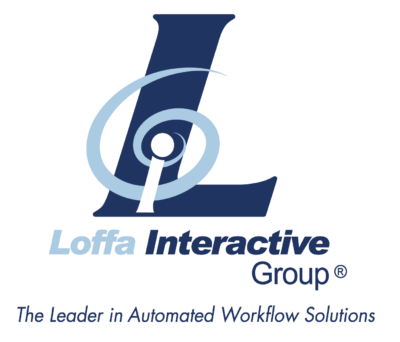Navigating the Complexity of Alternative Assets Compliance: Insights from Loffa Interactive Group
Regulatory Compliance in Alternative Assets: Navigating the Evolving Landscape
 The financial industry is currently experiencing a significant transformation, primarily driven by a series of final and proposed rules released by the SEC. This change has a profound impact, especially on those operating outside the realm of traditional securities investments or focusing entirely on institutional investors. According to a recent survey highlighted by Wealth Management, alternative asset classes might become a tougher playground for retail investors to engage in, primarily due to the increased compliance risks that advisers are now wary of.
The financial industry is currently experiencing a significant transformation, primarily driven by a series of final and proposed rules released by the SEC. This change has a profound impact, especially on those operating outside the realm of traditional securities investments or focusing entirely on institutional investors. According to a recent survey highlighted by Wealth Management, alternative asset classes might become a tougher playground for retail investors to engage in, primarily due to the increased compliance risks that advisers are now wary of.
Who We Are at Loffa Interactive Group
At Loffa Interactive Group, we’re not just another tech solutions provider; we’re your steadfast ally in decoding the complexity of this shifting regulatory landscape. With a legacy that spans over twenty years of collaboration with leading Wall Street firms, our hallmark has been our unyielding commitment to security integrity and operational prowess. Our product offerings, including the renowned Freefunds Verified Direct (FVD) and Prime Broker Interactive Network (PBIN), stand tall as pillars supporting regulatory compliance, streamlining the nuanced processes of managing Letters of Free Funds and intricacies of prime brokerage agreements.
The SEC’s Emphasis and Its Ripple Effects
The SEC’s move to reinforce the obligations of registered investment advisers and broker-dealers is sending waves across the financial ocean. These players must now diligently screen potential investment avenues, ensuring they align perfectly with their clients’ profiles. This adjustment has spilled over, influencing how brokerages engage with asset managers – especially those not directly under the SEC’s umbrella.
Deep Dive: Impact on Prime Brokers and Clearing Agencies
Prime Brokers
For Prime Brokers, the tightrope walk becomes even more precarious. They’re at the forefront, needing to assure that the asset managers they collaborate with adhere to the stringent SEC regulations. This new dynamic demands:
- Enhanced Regulatory Compliance: Loffa’s PBIN system emerges as a beacon, ensuring compliance with a plethora of regulations. It simplifies the management of critical documents, aligning operations with newly minted regulations seamlessly.
- Operational Efficiency: With regulations tightening, Prime Brokers can rely on solutions like Loffa’s to automate and streamline complex compliance processes, significantly reducing manual errors and enhancing operational efficiency.
Executing and Clearing Brokers
For Executing and Clearing Brokers, the focus intensifies on regulatory compliance related to transaction processing and reporting. The stakes are high, with compliance not just a legal mandate but a cornerstone of trust with their clients.
- Streamlined Trade Settlements: The FVD tool by Loffa is revolutionizing how brokers navigate the settlement process, ensuring compliance with Regulation T and other crucial requirements.
- Operational Resilience: Leveraging SaaS solutions boosts operational workflow efficiencies, providing executing and clearing brokers with a scalable and secure solution to manage the increase in regulatory scrutiny.
Looking Ahead: Embracing the Future With Confidence
The dynamic nature of regulatory compliance in alternative assets demands agility and foresight. Advisers, wealth managers, and brokerage firms now operate in an environment where compliance not only dictates operational strategy but also client accessibility to alternative investments.
 Loffa Interactive stands at the ready, offering tools and expertise designed for this new era. By fostering partnerships with trusted technology solutions like ours, firms can navigate these regulatory waters with confidence, ensuring compliance and focusing on growth.
Loffa Interactive stands at the ready, offering tools and expertise designed for this new era. By fostering partnerships with trusted technology solutions like ours, firms can navigate these regulatory waters with confidence, ensuring compliance and focusing on growth.
The relationship between asset managers, advisers, regulatory bodies, and technology partners is evolving. With the right partnerships, the financial industry can turn regulatory challenges into opportunities for innovation and increased investor trust. Loffa Interactive is committed to being at the forefront of this journey, empowering our clients to thrive amidst changes and enhance the accessibility and management of alternative assets.


 As the financial industry braces itself for the upcoming shift to a T+1 settlement cycle, it faces an unexpected hurdle—a major transportation disruption. Last evening’s halt in train services in and out of New York City, caused by downed wires, has thrown a wrench into the daily commute of many, including key players on Wall Street.
As the financial industry braces itself for the upcoming shift to a T+1 settlement cycle, it faces an unexpected hurdle—a major transportation disruption. Last evening’s halt in train services in and out of New York City, caused by downed wires, has thrown a wrench into the daily commute of many, including key players on Wall Street. Prime brokers, along with their executing and clearing counterparts, stand on the frontline of experiencing the brunt of such disruptions. Let’s zoom in on the two most pivotal aspects:
Prime brokers, along with their executing and clearing counterparts, stand on the frontline of experiencing the brunt of such disruptions. Let’s zoom in on the two most pivotal aspects:
 2023 has seen a notable spike in FINRA fines, with the Financial Industry Regulatory Authority dropping a hefty total of $89 million in penalties—a 63% jump from the previous year. This hike in fines shines a spotlight on the critical role companies like Loffa Interactive Group play in steering financial institutions through an increasingly complex regulatory maze.
2023 has seen a notable spike in FINRA fines, with the Financial Industry Regulatory Authority dropping a hefty total of $89 million in penalties—a 63% jump from the previous year. This hike in fines shines a spotlight on the critical role companies like Loffa Interactive Group play in steering financial institutions through an increasingly complex regulatory maze. In an era where regulatory eyes are ever-vigilant, partnering with a seasoned, secure, and compliant vendor like Loffa Interactive cannot be overstated. Their blend of experience, commitment to operational excellence, and innovation positions them as the prime choice for financial institutions navigating the complex regulatory landscape. Leveraging Loffa Interactive’s solutions allows firms to concentrate on their core objectives, secure in the knowledge that they’re in full compliance with the regulatory framework.
In an era where regulatory eyes are ever-vigilant, partnering with a seasoned, secure, and compliant vendor like Loffa Interactive cannot be overstated. Their blend of experience, commitment to operational excellence, and innovation positions them as the prime choice for financial institutions navigating the complex regulatory landscape. Leveraging Loffa Interactive’s solutions allows firms to concentrate on their core objectives, secure in the knowledge that they’re in full compliance with the regulatory framework.